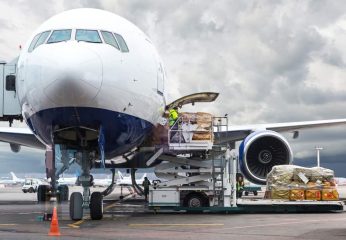INTERNATIONAL AIR FREIGHT & SHIPPING EXPLAINED: AIR FREIGHT CHARGES, RATES, AND COSTS
While many people know that air transport is quicker than ocean freight, you may be unaware of how freight charges are calculated within the industry. As transport costs are a major part of any business model and can have a big impact on your margins, having some understanding of how air freight rates and charges work can influence your future planning.
Air freight complements ocean, truck, or rail freight to provide faster and more reliable service at a premium cost for suppliers and customers who need it.
Contents
Air Cargo Explained
Businesses and individuals turn to air transportation when they need to get goods somewhere quickly. Example, whereas shipping something from China to the U.S. by sea could take between 20 and 40 days, that same journey may only take 3 days by air.
There are two primary ways of transporting something by air.
International air freight
This usually involves larger shipments and are primarily transported by dedicated transport planes. The world’s largest cargo plane, the Antonov 225, can carry a payload of 250,000 kg. Most cargo planes can accommodate cargo 2.44 x 3.15 m.
Express air freight
These are usually shipments from smaller businesses and individuals and mostly include parcel delivery. To be considered a parcel, the sum of the length, width, and depth of the package should be less than 2.74 m and it must weigh less than 31.75 kg. They tend to be processed and handled by a dedicated cycle company that handles the entire process from accepting the parcel from the sender through multimodal transport through to direct delivery to the receiver.
Air Freight Rates
Weight and volume impact how transporting goods by air is charged. Air cargo companies charge by volumetric weight or by simple gross weight. To calculate volumetric weight, multiply the volume of the package by 167. If that figure is more than the actual weight, then it is used as the weight to calculate the chargeable weight.
Other factors like travel distance between your point of origin and your final destination also impact the cost. Another factor that may save you money is your timeframe. If your cargo is not time sensitive, you may save a lot of money shipping by sea, road, or rail or by deprioritizing your air freight shipment. Your logistics agent or customs broker may look at finding space on a later flight that is not at full capacity and may offer reduced rates.

WHEN TO CHOOSE AIR
The higher rates involved in air freight may be completely necessary for many businesses. Air freight shipping is highly recommended in some situations People will opt to use air cargo in their supply chain for one of three reasons.
#1 Speed
When deliveries are time sensitive or goods have a limited life such as fresh seafood or flowers, then air transportation is the best choice. Transporting goods by air is around 30 times faster than by ship. The downside of this is that, on average, the cost of shipping by air is around 16 times that of ocean shipping. However, for some industries, this is a necessary cost of doing business.
#2 Reliability
Ocean freight can easily be delayed by poor weather and departures from ports can be held back for several days. Aircraft will only be affected by extreme weather conditions. Unlike cargo ships, it is easier to divert an aircraft to a nearby unaffected airport and have the goods sent on. Air freight tends to adhere to published schedules and your goods are easier to track as well.
#3 Safety
Compared to other forms of freight shipping, air transportation offers the highest levels of safety for your goods. Cargo that is transported by air is less likely to be damaged – or suffer losses due to theft – than other forms of transportation. Its shortened timeline also helps keep the quality of perishable goods.
WHEN NOT TO CHOOSE AIR
When you are looking at the logistics of getting your goods from point A to point B, then you will likely make a list of the pros and cons of each option. There are 5 main things that make customers cross air freight off their options list.
#1 Prohibitive Costs
The cost of shipping by air can vary, as can the savings in choosing ocean freight instead. While there is no set rule as to how much more this can cost, it can be anywhere between 4 and 16 times more expensive to send goods by air than by sea. If your delivery is not time sensitive or you are not sending perishables, consider alternative methods of travel for your goods.
#2 Environmental Impact
More businesses are taking their carbon footprint into account, especially when it comes to cargo. If you send a 2 tonne shipment 5,000 km by sea, the total emissions on that shipment will be around 150 kg of CO2. If you send that same shipment by air, that emissions figure soars to 6,605 kg.
#3 Weight and Shape of Shipment
Unless you have access to an Antonov 225, some shipments may just be too large, heavy, or awkwardly shaped to be carried as air cargo.
#4 Hazardous Materials
There are very strict guidelines governing the transportation of many hazardous materials by air. Some materials may need specialist training and handling, something that can impact costs. Unless delivery of these materials is time sensitive, you may want to consider ocean freight instead.
Final Thoughts
Deciding on what transportation mode to use can be a complicated and confusing process. With the full time professional team at FYM Express, you can be assured of the best service and advice on everything from air cargo to customs clearance. If you have any questions regarding international air freight, or if you would like a shipping quote on your goods, call us at (84) 028 66 787 222.


